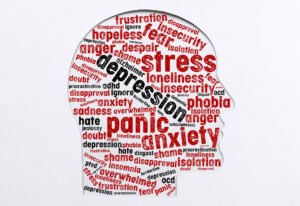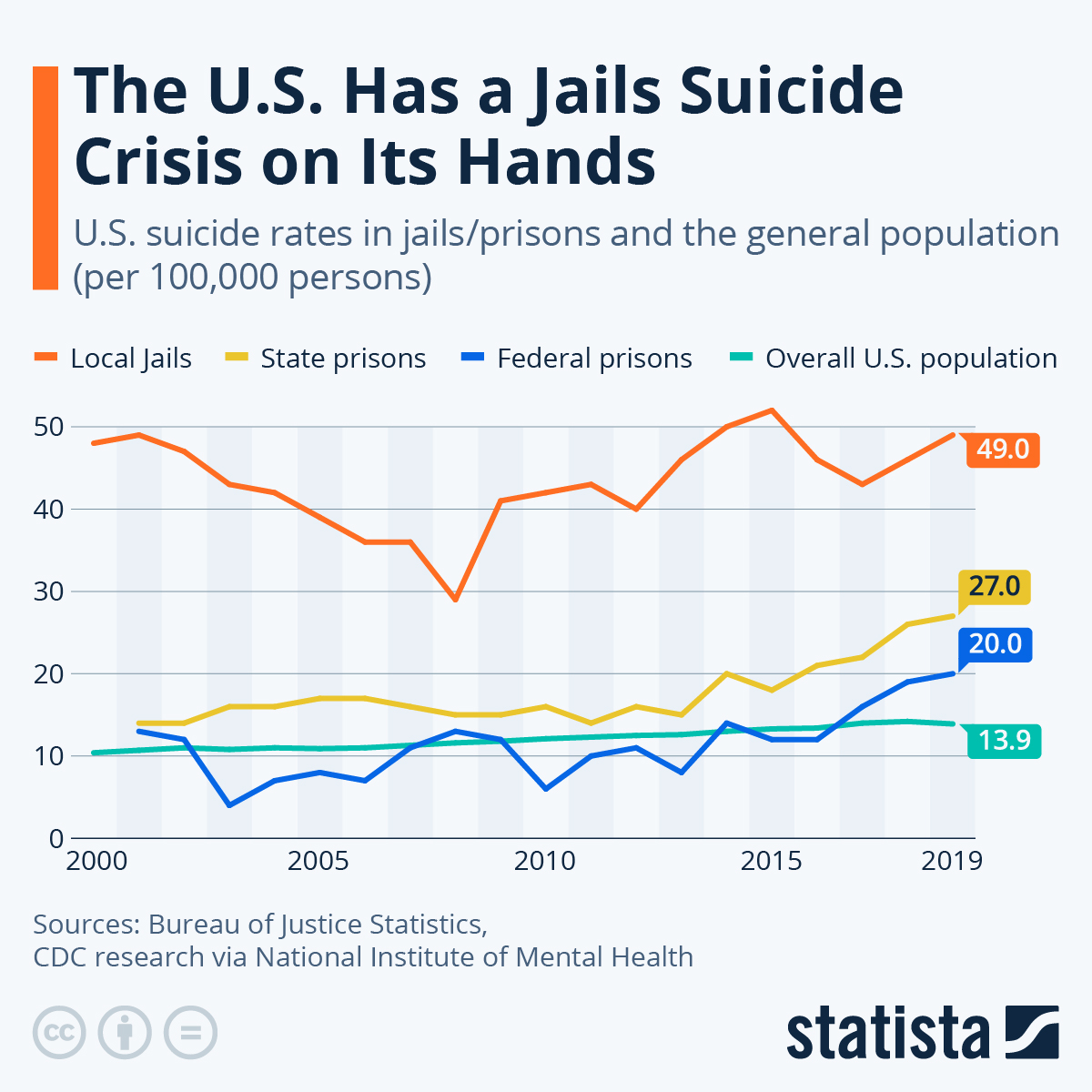Most deaths in jail are from suicide

Jailed inmates are 2-3 times as likely to commit suicide than the general population. And to make matters worse, that rate is climbing. For anyone in jail, with loved ones in jail, or recently released–it is important to be aware of this concerning trend.

Suicide and Suicide Attempts in Jail
The average stay in jail stay may be less than a month, but that is still plenty of time to be affected by suicide. Research shows that suicide deaths usually occurred early during an inmates stay. Most suicide deaths occurred in 9-days or less and recent data indicates that it could even be as short as a week.
These deaths occurred in all parts of jail facilities, but most (46.1%) were in general housing areas and 38% in isolation. Of the suicide deaths, the highest number were those between the ages of 25 and 34 years old. And only 1 in 5 (17.9%) were actually convicted of a crime. Rates of suicide were also higher as court dates approached. Over a third (35%) had upcoming court dates, and 80% of those deaths occurred within the 2-days prior to their court date.
Research with those who attempted or threatened suicide, or had self-harming behaviors has helped shed light on suicide risk factors in jail.
- Threats or suicide attempts were 61% higher for those in jail for the first time.
- For each violent event witnessed in jail, the likelihood of suicidal attempts or behaviors nearly doubled.
- Inmates who were assaulted while in jail had a 2.5 greater odds of suicidal attempts or behaviors.
- Unstable housing outside of jail led to an additional 4% increase in suicide attempts or behaviors each time they were incarcerated.
Increased Suicide Risk after Release
For every 5 suicide deaths that occur annually in the U.S., it is estimated that at least one of those deaths was someone who spent time in jail within the past 2-years. The first two years following release have been identified as a period of increased vulnerability for suicide.
Within 1-year of release, former inmates were nearly 9 times as likely to die from suicide than those without recent time in jail. This risk dropped in the second year, but they were still 7 times as likely to die by suicide.
Just over a quarter (27.2%) of adult suicide deaths were individuals who spent time in jail in the 2-years prior to their death, with 19.9% in just 1-year prior. For context, those released from jail at least once in the past 2-years comprise 2.8% of the U.S. adult population. However, they account for 19.9% of adult suicide deaths.
System Failures
Often times, when suicide (or suicidal attempts/behaviors) did occur, problems were found with adequate monitoring and intervention by jail staff. Not enforcing the rules or remaining vigilant, decreased their ability to properly monitor inmates. And often times, this was with inmates who were isolated or had other severe mental illnesses already.
Inmates at times even reported being suicidal, but were “medically cleared” and sent back to their cells without suicide-watch protocols in place. Or in another instance, a woman told deputies over an intercom that she was going to hang herself, and was dismissed. She died while being monitored by a camera, with no response for nearly 16-minutes.
Even in 2024, these types of problems continue to occur. In Arkansas, 6 inmates committed suicide in less than 5-months. This was a higher rate of suicide deaths than the 12 total in the previous year. Notably, each of the 6 inmates requested mental health care, and most requested that care in the week prior to their death.
Causes
Overcrowding and understaffing of jails, as well as increases in mental health concerns are major factors cited in this troubling trend. And a recent study in 2020 confirmed this, calling out 3-main factors impacting suicide in jail:
- Marginalized Communities – Many inmates are already disadvantaged when they enter jail. Their backgrounds include poverty, homelessness, unemployment etc.
- Unmet Mental Health Needs – Jails and prison systems are seen by some as turning into “de facto mental health wards.” The mentally ill are being incarcerated without the support or services that are needed.
- Poor Jail Conditions – The very nature of being in jail can be traumatic. Some are plagued with abuse, a loud environment, unpredictability and threats from other inmates.
All of this information leads to a sad conclusion. Too many lives are being lost to suicide, and many suicide deaths in jail were likely preventable. Be it from unmet mental health concerns, or poor environments, the suicide risk to inmates is unnecessarily high and action is clearly needed.
If you or a loved one has experienced suicidal ideation, behaviors or attempts while in jail, consider reaching out to one of our experienced attorneys to see if we can help.

